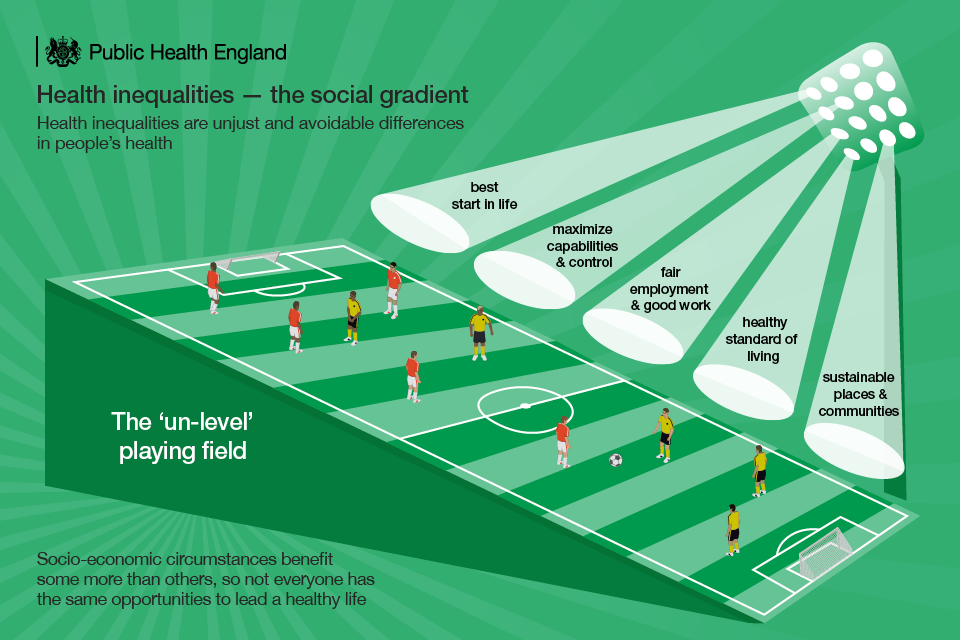
People living in the most deprived areas can expect to spend nearly 20 fewer years in good health compared with those in the least deprived areas. This fact is avoidable, unjust and summarises the scale of health inequality in England today.
PHE has produced a number of evidence reviews, tools and guidance to help support national, regional and local areas to reduce health inequalities.
For the first time, all of these resources have been brought together in one location: the Health Equity Collections page. This will make it easier to find data, evidence and tools on health inequalities, and therefore be better equipped to take effective action to reduce it.
What does the page contain?
The Health Equity Collections page contains over 30 resources that have been produced over the last few years. Some key documents included in the Collections page are summarised below.
The chapter on health inequalities within the Health Profile for England identified, amongst other things, a clear North South divide in life expectancy.
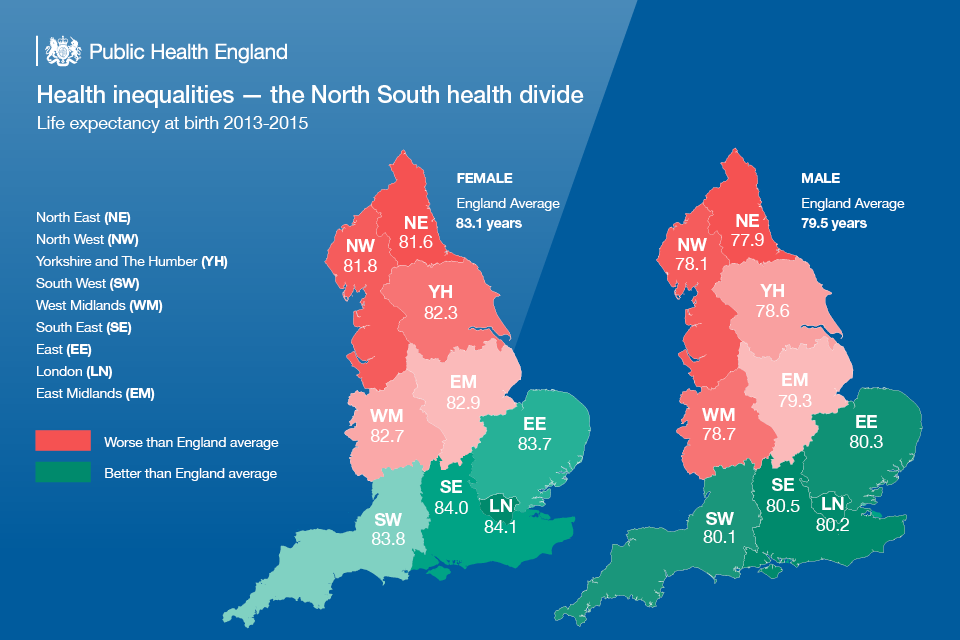
It also shows that CVD, cancer, and respiratory diseases were the top 3 factors driving the difference in life expectancy between the most and least deprived communities.
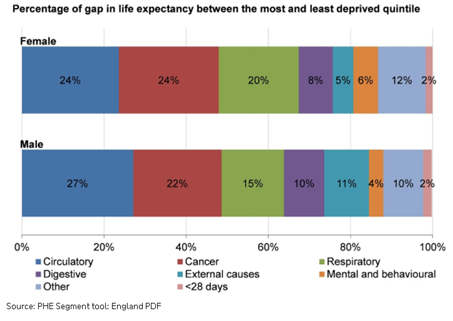
Source: here
Reducing health inequalities in local areas
In September, we published ‘Reducing health inequalities in local areas,’ a guide that sets out actions that local health systems can take to make an impact at a population level. It also shows, in order to achieve reduction in inequalities, a range of different interventions by different sector must be delivered systemically at sufficient scale and with long-term sustainability.
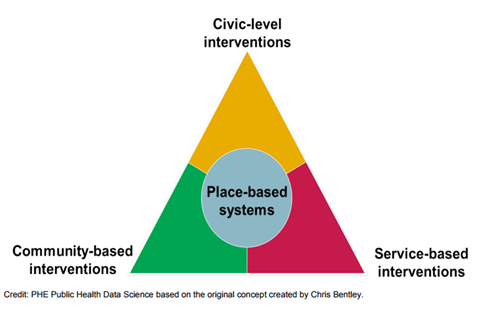
Source: here
Evidence papers
There are a number of evidence papers that provide practical advice for actions to take to reduce inequalities across a number of determinants:
- Building young people’s resilience in schools and young people
- Increasing employment opportunities and improving workplace health
- Fuel poverty and cold related health problems
- Community based approaches to health
- Improving access to green spaces
- Using the Social Value Act
Tools to support outcomes
The collections page also features a number of tools that provide information to support monitoring of local, regional and national outcomes in reducing health inequalities.
Health Profiles are conversation starters, which provide a snapshot overview of health for each local authority and highlight issues that can affect health in each locality.
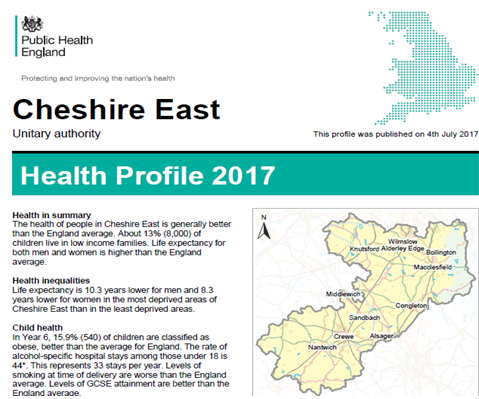
The Segment Tool provides information on the causes of death that are driving inequalities in life expectancy at local area level. Targeting the causes of death which contribute most to the life expectancy gap is likely to have a significant impact on reducing health inequalities.
You’ll also find our most recent publication, Modern Slavery and Public Health, which uncovered several opportunities for public health to make a difference to the anti-slavery agenda.
The report discusses how leaders in public health are in a position to influence statutory and third sector engagement by talking about modern slavery (for example, housing associations, schools and allied health professionals) and raising public awareness.
We hope you find this library of resources helpful in analysing and reducing heath inequalities either at a national or local level. We will continue to populate it as we develop further insights in this area.
If you have any questions about this page or any of the documents listed here, please contact the Health Equity team at health.equity@phe.gov.uk
